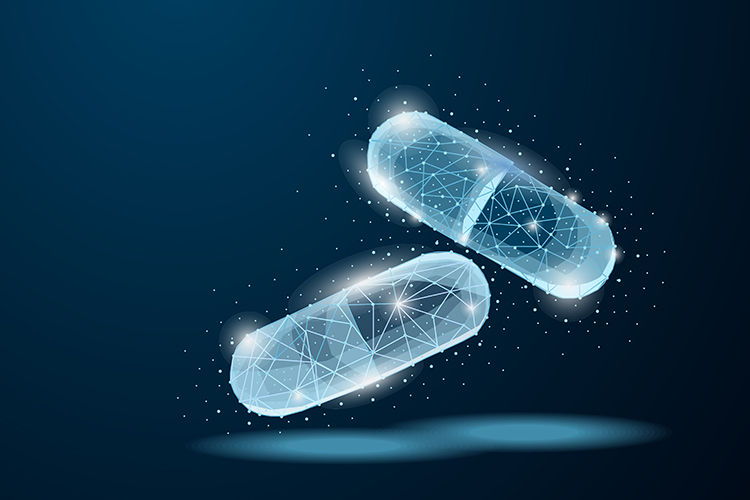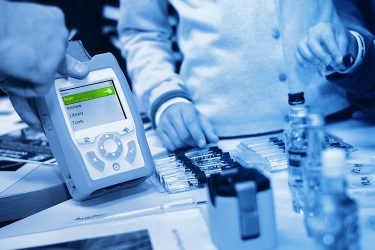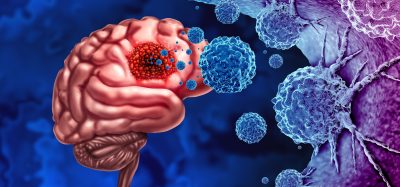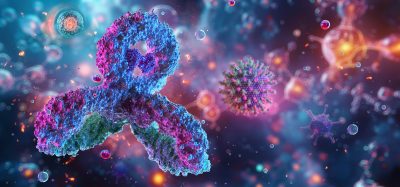A label-free imaging technique for drug evaluation at single‑cell level
Posted: 2 December 2020 | Arno Germond (RIKEN Center for Biosystems Dynamics Research) | No comments yet
This article provides a brief overview of the technical and conceptual advantages of Raman spectroscopy, a label-free imaging technique that is being increasingly used for the purpose of drug evaluation.


Despite these efforts, numerous drugs fail in early and late stages of clinical trials, partly due to insufficient drug efficacy. One reason that has been put forward by industrials and authors is that these evaluations are performed on population levels, which do not account for the heterogeneity in the phenotypic response of individual cells for drug uptake and its metabolisation.1 It is therefore essential to evaluate how single cells respond to drug exposure for unbiased pre-clinical target validation.2
Numerous drugs fail in early and late stages of clinical trials, partly due to insufficient drug efficacy”
To address this challenge, a myriad of single-cell analysis techniques combined with automated systems have been developed for drug evaluation. Single-cell sequencing and MS‑based techniques are considered the gold standard in single-cell measurements, mainly due to their sensitivity, selectivity and the comprehensive information they yield. However, these techniques require high labour costs, high costs for sample preparation and are destructive to the cells, which restrains the possibility for longitudinal studies. To address these challenges, imaging techniques such as a label-free method known as Raman spectroscopy, have been introduced.3,4,5
Raman spectroscopy is a vibrational spectroscopy technique that is similar to near infrared (NIR) spectroscopy and has many applications in industry, pharmaceutical and medical science. It uses laser microscopy to measure the molecular content of the cells, which is represented as a spectrum often referred to as a “molecular fingerprint”. A detailed review of Raman spectroscopy and derivatives for drug discovery is presented by Ali et al.4 and Tipping et al.5 The technique has long been criticised for its low sensitivity and speed; however, recent developments in electronics and optics, along with novel algorithms for intelligent data analysis during the past two decades have made Raman spectroscopy increasingly competitive and suitable for drug studies both in vitro and in vivo.


In a recent study, we used Raman spectroscopy to screen for cells responding to tamoxifen exposure, a drug typically used in cancer treatment.4 One motivation for this study was that not all cancer cells respond equally to tamoxifen exposure. Furthermore, the heterogeneous metabolisation of the drug into active metabolites needs to be detected to design more effective treatments. Cells were subdivided into control and drug-treated subgroups, where drug-treated cells were exposed with 10μM concentration of tamoxifen diluted in solvent (DMSO) whereas in the control group, a corresponding volume of DMSO was used to account for its effects on cells. Raman spectroscopy was used to perform single-cell level measurements of a two-dimensional (2D) culture of liver cells. Data collection took approximately 15 seconds per single cell using our system.
Our results showed that Raman spectroscopy combined with a simple machine learning model provided an accurate detection of the metabolic response to tamoxifen treatment with single‑cell precision. This result was confirmed with MS measurements performed on the same cells using a cell-picking system. Our results also revealed a strong heterogeneity of drug response among cells even within the same treatment condition, which again emphasises the need for single-cell investigations. While our study focused on only one type of drug and cell type, it aligns with findings of previous studies that have evaluated the response of other drugs in cells and tissues.3,6-9 Taken together, these studies show how Raman spectroscopy can improve our understanding of drug cellular concentration and localisation, as well as drug metabolisation in various cells and tissues. Using this technique for drug screening, cytotoxicity and drug stability assessment will likely accelerate the pre-clinical optimisation cycles and translation of drug candidates to clinical trials.10
Looking forward, these pioneering studies encourage a qualitative and economic assessment of Raman spectroscopy when embedded at various steps of drug discovery and evaluation processes. Additionally, for its successful translation into the drug evaluation process both the advantages and disadvantages must be considered, many of which have been reviewed previously by Professor De Beer.11
Disadvantages of Raman spectroscopy include a proper assessment of possible sources of error and variability. The potential laser damage to cells is also a concern, as it can hinder the evaluation of the drug response. However, previous work on pluripotent stem cells, which are very sensitive to laser light, found that measurements with low laser power do not damage cells or influence the output spectrum, even after repeated scanning of the same cell areas.12 Previous studies also showed the possibility for continuous measurements without laser damage,13 which is important when performing longitudinal evaluation of drug effects on cells.
Several Raman derivatives that are 1,000 times faster than spontaneous Raman spectroscopy also exist”
Importantly, the technique presents many advantages as it is relatively low cost and consists of a laser scanning microscope equipped with a spectrophotometer and detector. Compact Raman systems are already commercially available and can be equipped with various optical probes (such as Raman optical fibre) thus accelerating the possibility for immediate translation for in‑line process monitoring. In addition, the sample preparation can be reduced to zero and the use of expensive disposables and labelling is not required, which reduces the associated costs and removes the need for labour work. Raman spectroscopy does require expertise (for building and data analysis); however, both measurements and diagnostics can be fully automated, which makes this technique readily applicable for pharmaceutical companies and clinical facilities with minimal training. Finally, several Raman derivatives that are 1,000 times faster than spontaneous Raman spectroscopy also exist, such as stimulated Raman spectroscopy. Although these systems are not yet commercially available as they are more technically demanding, we envision that such commercial systems will be available in the near future.
Considering the conceptual and technical advantages presented above, we envision that the promising integration of Raman spectroscopy in process analytical technology (PAT) will further accelerate the drug evaluation process in the future.
About the author
Dr Arno Germond is a Senior Cell Research Scientist with work experience both in industry and academia. He has 10 years of expertise in single-cell metabolism and project management. He received the early career award from the Biophysical Society of Japan in 2018.
References
- Stulpinas, Aurimas, Aušra Imbrasaitė, Natalija Krestnikova, and Audronė Valerija Kalvelytė. 2020. “Recent Approaches Encompassing the Phenotypic Cell Heterogeneity for Anticancer Drug Efficacy Evaluation.” In Tumor Progression and Metastasis, edited by Ahmed Lasfar and Karine Cohen-Solal. IntechOpen.
- Bunnage, Mark E., Eugene L. Piatnitski Chekler, and Lyn H. Jones. 2013. “Target Validation Using Chemical Probes.” Nature Chemical Biology 9 (4): 195–99.
- Lin, Hsin-Hung, Yen-Chang Li, Chih-Hao Chang, Chun Liu, Alice L. Yu, and Chung-Hsuan Chen. 2012a. “Single Nuclei Raman Spectroscopy for Drug Evaluation.” Analytical Chemistry 84 (1): 113–20.
- Ali, Ahmed, Yasmine Abouleila, Yoshihiro Shimizu, Eiso Hiyama, Tomonobu M. Watanabe, Toshio Yanagida, and Arno Germond. 2019. “Single-Cell Screening of Tamoxifen Abundance and Effect Using Mass Spectrometry and Raman-Spectroscopy.” Analytical Chemistry 91 (4): 2710–18.
- Tipping, W. J., M. Lee, A. Serrels, V. G. Brunton, and A. N. Hulme. 2016. “Stimulated Raman Scattering Microscopy: An Emerging Tool for Drug Discovery.” Chemical Society Reviews 45 (8): 2075–89.
- Baik, Jason, and Gus R. Rosania. 2011. “Molecular Imaging of Intracellular Drug-Membrane Aggregate Formation.” Molecular Pharmaceutics 8 (5): 1742–49.
- Heidari Torkabadi, Hossein, Christopher R. Bethel, Krisztina M. Papp-Wallace, Piet A. J. de Boer, Robert A. Bonomo, and Paul R. Carey. 2014. “Following Drug Uptake and Reactions inside Escherichia Coli Cells by Raman Microspectroscopy.” Biochemistry 53 (25): 4113–21.
- Fu, Dan, Jing Zhou, Wenjing Suzanne Zhu, Paul W. Manley, Y. Karen Wang, Tami Hood, Andrew Wylie, and X. Sunney Xie. 2014. “Imaging the Intracellular Distribution of Tyrosine Kinase Inhibitors in Living Cells with Quantitative Hyperspectral Stimulated Raman Scattering.” Nature Chemistry 6 (7): 614–22.
- Shende, Chetan, Wayne Smith, Carl Brouillette, and Stuart Farquharson. 2014. “Drug Stability Analysis by Raman Spectroscopy.” Pharmaceutics 6 (4): 651–62.
- Isherwood, Beverley, Paul Timpson, Ewan J. McGhee, Kurt I. Anderson, Marta Canel, Alan Serrels, Valerie G. Brunton, and Neil O. Carragher. 2011. “Live Cell in Vitro and in Vivo Imaging Applications: Accelerating Drug Discovery.” Pharmaceutics. https://doi.org/10.3390/pharmaceutics3020141.
- “Raman Spectroscopy for the Analysis of Drug Products and Drug Manufacturing Processes.” n.d. Accessed October 14, 2020. https://www.europeanpharmaceuticalreview.com/article/1896/raman-spectroscopy-for-the-analysis-of-drug-products-and-drug-manufacturing-processes/.
- Germond Arno, Panina Yulia, Shiga Mikio, Niioka Hirohiko, Watanabe Tomonobu. 2020. Following embryonic stem cells, their differentiated progeny, and cell-state changes during iPS reprogramming by Raman spectroscopy. Analytical chemistry (accepted/in press).
- Pascut, F. C.; Kalra, S.; George, V.; Welch, N.; Denning, C.; Notingher, I. Non-Invasive Label-Free Monitoring the Cardiac Differentiation of Human Embryonic Stem Cells in-Vitro by Raman Spectroscopy. Biochim. Biophys. Acta 2013, 1830 (6), 3517–3524
Related topics
Analytical Techniques, cytotoxicity, Drug Development, Imaging, In Vitro, In Vivo, Label-Free, Metabolomics, Spectroscopy, Therapeutics
Related conditions
Cancer
Related organisations
ForteBio
Related people
Professor De Beer








